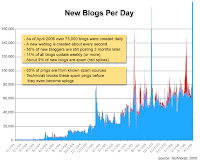.bmp)
Slide 28.bmp)
Slide 19
This can be seen in the examples of my group’s presentation slides which is shown above. After my observation during the presentation, most of the audiences prefer slide number 28 compared to slide number 19. Slide 28 is a combination of text and visual, as for slide 19, it only contains text and words. The audience will tend to feel bored which causes them to be unable to concentrate on slide 19. Therefore, using the combination of words and pictures is more effectively as the combination works together to provide complete information about the actions to take. The effective way of presentation should be explained in a simple, interesting and concise manner. Bernhardt (1986) suggested that the five laws of design, should include the law of visual identity; the law of equilibrium; the law of closure; the law of good continuation; and the law of similarity. Besides that, it should also content good writing, which uses correct words and sentences should also be clear, emphatic and concise.
Bernhardt, S.A., 1986, Seeing the text, College Composition and Communication, vol.37, no.1, pp.66-78.
Schriver, K,A., 1997, Chapter 6: Dynamics in document design: Creating texts for readers, New York, pp.361-44.






